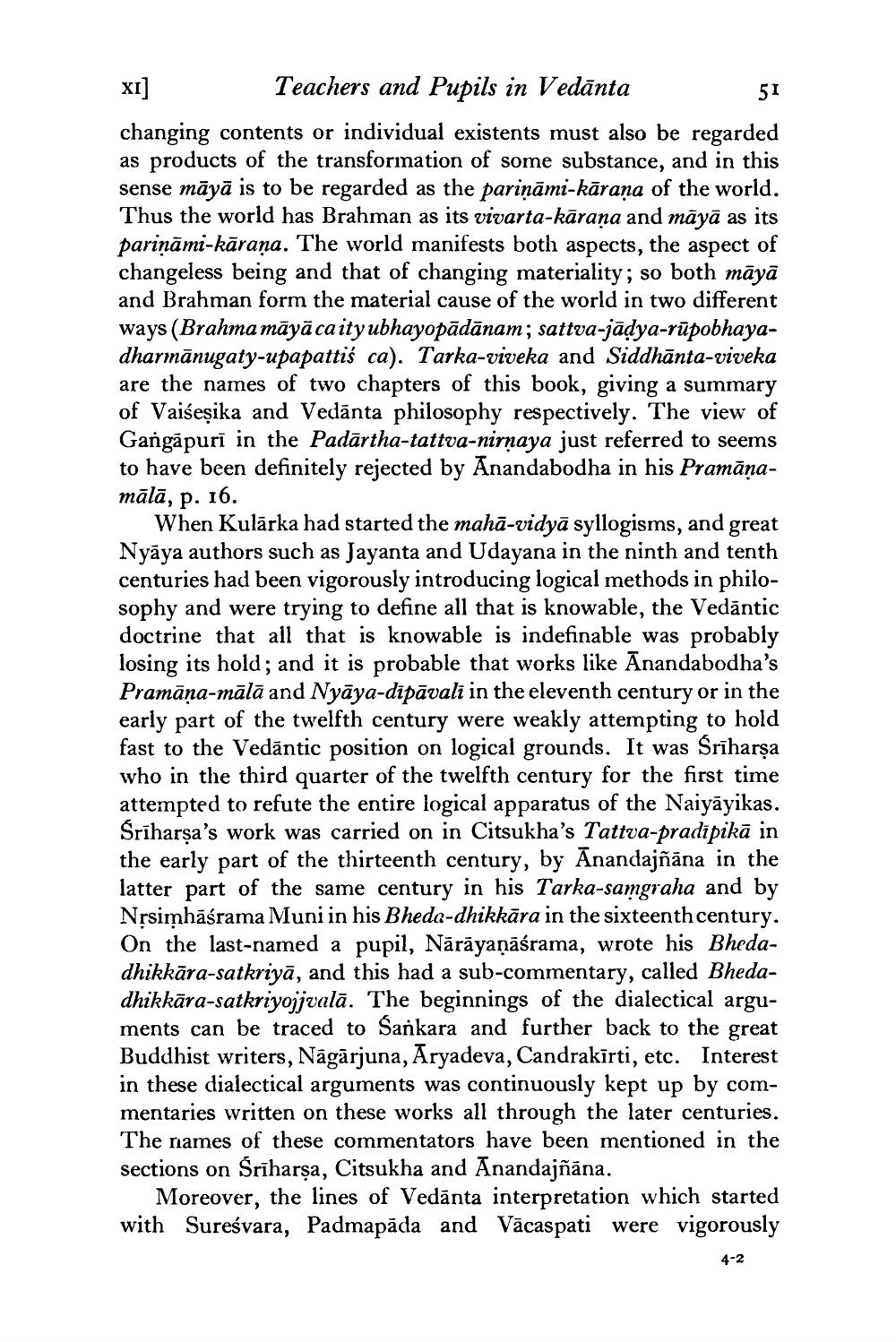________________
XI]
51
Teachers and Pupils in Vedānta changing contents or individual existents must also be regarded as products of the transformation of some substance, and in this sense māyā is to be regarded as the pariņāmi-kāraṇa of the world. Thus the world has Brahman as its vivarta-kārana and māyā as its pariņāmi-kāraņa. The world manifests both aspects, the aspect of changeless being and that of changing materiality; so both māyā and Brahman form the material cause of the world in two different ways (Brahma māyā caity ubhayopādānam; sattva-jādya-rūpobhayadharmānugaty-upapattiś ca). Tarka-viveka and Siddhānta-viveka are the names of two chapters of this book, giving a summary of Vaišeșika and Vedānta philosophy respectively. The view of Gangāpurī in the Padārtha-tattva-nirnaya just referred to seems to have been definitely rejected by Anandabodha in his Pramānamālā, p. 16.
When Kulārka had started the mahā-vidyā syllogisms, and great Nyāya authors such as Jayanta and Udayana in the ninth and tenth centuries had been vigorously introducing logical methods in philosophy and were trying to define all that is knowable, the Vedāntic doctrine that all that is knowable is indefinable was probably losing its hold; and it is probable that works like Anandabodha's Pramāņa-mālā and Nyāya-dīpāvali in the eleventh century or in the early part of the twelfth century were weakly attempting to hold fast to the Vedāntic position on logical grounds. It was Srīharşa who in the third quarter of the twelfth century for the first time attempted to refute the entire logical apparatus of the Naiyāyikas. Śrīharşa's work was carried on in Citsukha's Tattva-pradipikā in the early part of the thirteenth century, by Anandajñāna in the latter part of the same century in his Tarka-samgraha and by Nșsimhāśrama Muni in his Bheda-dhikkāra in the sixteenth century. On the last-named a pupil, Nārāyaṇāśrama, wrote his Bhedadhikkāra-satkriyā, and this had a sub-commentary, called Bhedadhikkāra-satkriyojjvala. The beginnings of the dialectical arguments can be traced to Sankara and further back to the great Buddhist writers, Nāgārjuna, Aryadeva, Candrakīrti, etc. Interest in these dialectical arguments was continuously kept up by commentaries written on these works all through the later centuries. The names of these commentators have been mentioned in the sections on Śrīharşa, Citsukha and Anandajñāna.
Moreover, the lines of Vedānta interpretation which started with Sureśvara, Padmapāda and Vācaspati were vigorously
4-2




